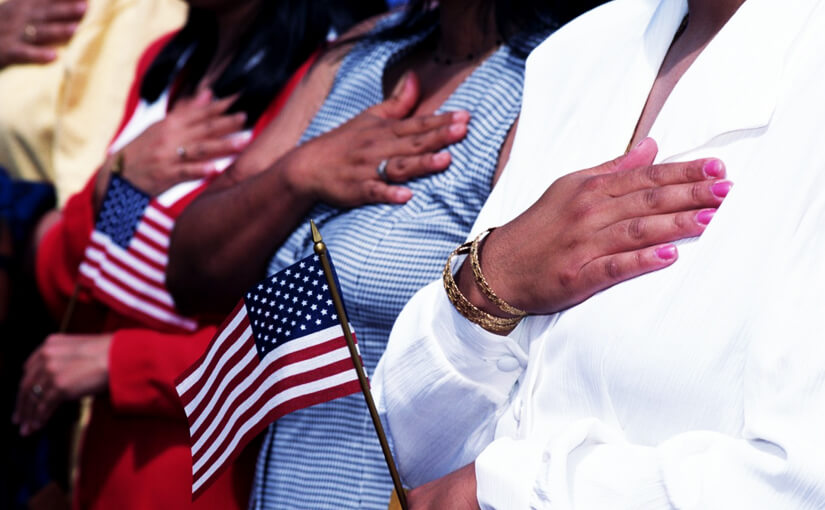Historical Context of the Pledge of Allegiance
The Pledge of Allegiance was originally composed in 1892 by Francis Bellamy, a Baptist minister and social activist. It was created as part of a campaign to promote patriotism in American schools. The original wording was slightly different from what we recite today, evolving over time, particularly with the addition of the phrase “under God” in 1954 during the Cold War era.
The Text of the Pledge
The current text of the Pledge of Allegiance is:”I pledge allegiance to the flag of the United States of America, and to the republic for which it stands, one nation under God, indivisible, with liberty and justice for all.”
Key Components of the Pledge
- The Flag: The flag represents the United States and its values, including freedom, democracy, and unity.
- The Republic: Refers to the government system established by the Constitution, emphasizing the rule of law and the rights of citizens.
- One Nation: This phrase signifies national unity, suggesting that despite diversity, Americans are united as one people.
- Under God: This addition reflects the belief in a higher power and the moral foundation of the nation.
- Indivisible: This term emphasizes the importance of national unity and the idea that the country cannot be divided.
- Liberty and Justice for All: This final phrase underscores the commitment to freedom and equality for every citizen.
What We Show Loyalty To
When reciting the Pledge of Allegiance, individuals express loyalty to several fundamental concepts:
1. Loyalty to the Flag
The flag serves as a powerful symbol of the nation. By pledging allegiance to the flag, individuals affirm their commitment to the values it represents, including:
- Freedom: The flag symbolizes the freedoms guaranteed by the Constitution, such as speech, religion, and assembly.
- Sacrifice: The flag also represents the sacrifices made by those who have fought to protect these freedoms, including military personnel.
2. Loyalty to the Republic
The Pledge emphasizes loyalty to the republic, which signifies:
- Democratic Principles: Loyalty to the democratic system established by the Constitution, which includes the separation of powers and checks and balances.
- Rule of Law: A commitment to the rule of law, ensuring that all citizens are subject to the same laws and that justice is administered fairly.
3. Loyalty to National Unity
The phrase “one nation” highlights the importance of unity among citizens:
- Diversity and Inclusion: Loyalty to the idea that despite differences in race, ethnicity, and beliefs, all Americans are part of a single nation.
- Collective Identity: A recognition that individual identities contribute to a collective national identity.
4. Loyalty to a Higher Power
The inclusion of “under God” reflects a belief in a higher moral authority:
- Moral Foundation: Acknowledging that the nation’s values are rooted in a moral framework that transcends human law.
- Spiritual Unity: Suggesting that the nation is united not only politically but also spiritually.
5. Loyalty to Liberty and Justice
The Pledge concludes with a commitment to liberty and justice for all:
- Equality: A pledge to uphold the rights of all citizens, ensuring that everyone has access to the freedoms and protections guaranteed by the Constitution.
- Social Justice: A recognition of the ongoing struggle for civil rights and the importance of working towards a more just society.
The Importance of the Pledge in American Culture
The Pledge of Allegiance holds a significant place in American culture and society. It is recited in various settings, including schools, government meetings, and public events, serving as a reminder of shared values and national identity.
Educational Significance
In schools, the Pledge is often recited at the beginning of the day, instilling a sense of patriotism and community among students. It serves as a daily reminder of the principles upon which the nation was founded.
Civic Engagement
Reciting the Pledge also encourages civic engagement and participation in democratic processes. It reminds citizens of their responsibilities to uphold the values of the republic and to actively participate in shaping the future of the nation.
Controversies and Debates
The Pledge has not been without controversy. Debates surrounding the phrase “under God” have raised questions about the separation of church and state. Some argue that its inclusion in the Pledge infringes on the rights of non-religious individuals or those who adhere to different faiths.
Table: Key Concepts of Loyalty in the Pledge of Allegiance
| Concept | Description |
|---|---|
| Loyalty to the Flag | Represents freedom, sacrifice, and national identity. |
| Loyalty to the Republic | Affirms commitment to democratic principles and the rule of law. |
| Loyalty to National Unity | Emphasizes the importance of unity among diverse citizens. |
| Loyalty to a Higher Power | Acknowledges a moral foundation and spiritual unity. |
| Loyalty to Liberty and Justice | Commits to equality and social justice for all citizens. |
FAQ Section
Q1: What is the Pledge of Allegiance?
A1: The Pledge of Allegiance is a statement of loyalty to the United States, recited by individuals to express their commitment to the nation and its values.
Q2: Who wrote the Pledge of Allegiance?
A2: The Pledge was originally composed by Francis Bellamy in 1892.
Q3: Why is the Pledge recited in schools?
A3: The Pledge is recited in schools to instill a sense of patriotism and community among students, reminding them of the values and principles of the nation.
Q4: What does “under God” signify in the Pledge?
A4: The phrase “under God” reflects a belief in a higher moral authority and suggests that the nation’s values are rooted in a moral framework.
Q5: Where can I find more information about the Pledge of Allegiance?
A5: For more detailed information, you can refer to the Wikipedia page on the Pledge of Allegiance: Pledge of Allegiance.
Conclusion
The Pledge of Allegiance serves as a powerful expression of loyalty to the United States and its core values. By reciting the Pledge, individuals affirm their commitment to the flag, the republic, national unity, a higher moral authority, and the principles of liberty and justice for all. Understanding what we show loyalty to when we say the Pledge helps reinforce the importance of these values in American society and encourages active participation in the democratic process.



